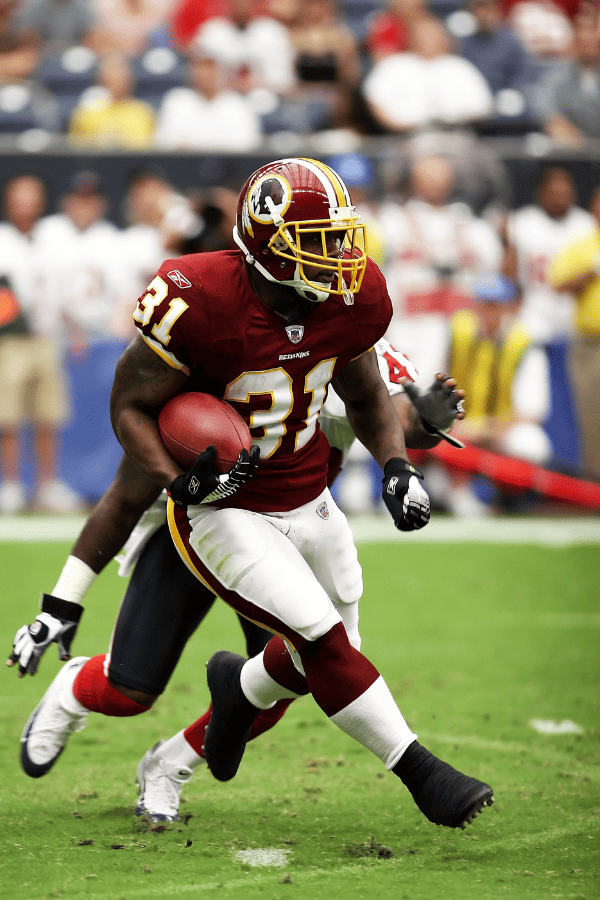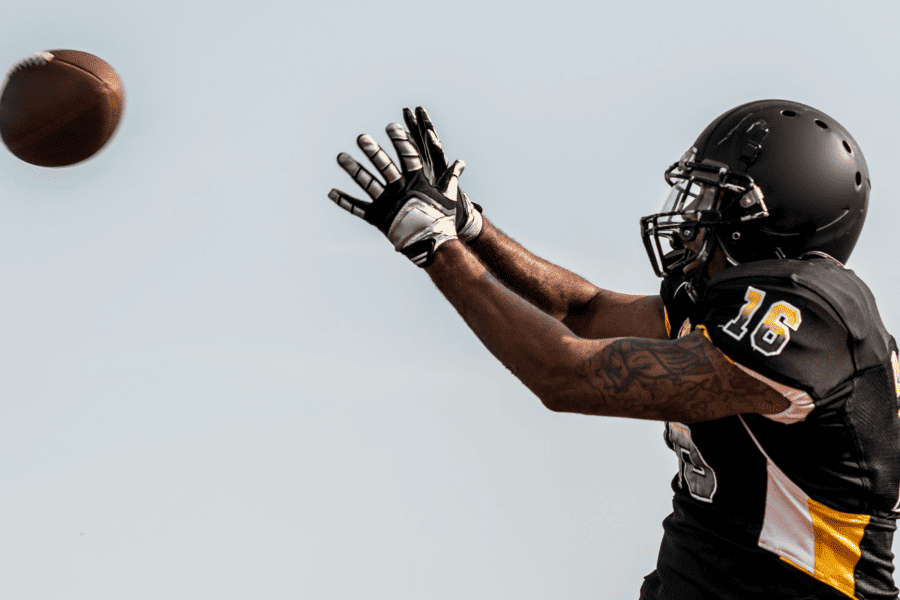Running Back vs Wide Receiver: Dynamic Duo of Offense
In American football, understanding the roles and responsibilities of each position is key to appreciating the game’s strategy and excitement. Two of the most dynamic and crucial roles in any offensive lineup are those of the running back and the wide receiver.
While both positions are essential for moving the ball and scoring points, they differ significantly in their functions, skills, and how they execute plays. For those new to the sport, this article will serve as a guide to understanding these two positions, explaining the distinct yet complementary roles they play in the team’s offensive strategy.
By exploring the unique qualities and responsibilities of running backs and wide receivers, we can gain a deeper appreciation of the intricacies and excitement that these positions bring to the game of football.
Running Back: Masters of the Ground Game

The running back is a fundamental component of the ground game in football, specializing in carrying the ball during rushing plays. Positioned in the backfield, directly behind or beside the quarterback, the running back’s primary role is to receive handoffs and power through the defensive line to gain yardage.
This position demands a diverse skill set, as running backs are not only expected to rush with the ball but also provide key blocks for the quarterback and, at times, act as a receiver for short passes. The success of a running back hinges on their ability to find and exploit gaps in the defense, showcasing agility, speed, and strength to evade tackles and maximize yardage.
Running backs often serve as a reliable option for maintaining possession and controlling the game’s pace, making them indispensable in a well-rounded offensive strategy.
Key Traits of a Successful Running Back
For a running back to excel, certain attributes are essential. Speed and agility top the list, enabling them to swiftly navigate through defenders and exploit gaps in the defense. Strength and physical resilience are also crucial, as running backs frequently face direct tackles and must be able to withstand and break through contact.
Vision is another key trait; a successful running back must quickly assess the field and make split-second decisions to find the best running lanes. Good hands are important for catching passes, particularly in offensive schemes that utilize running backs as receivers.
Finally, the ability to read defenses and adapt to shifting game situations is vital for a running back to perform effectively in various offensive plays.
Read More:
Wide Receiver: The Aerial Threat

In contrast to the running back, the wide receiver is the cornerstone of the aerial aspect of the game. Wide receivers line up near the sidelines and are primarily responsible for catching passes from the quarterback. Their role is crucial in advancing the ball downfield and creating scoring opportunities through the passing game.
Wide receivers must run precise routes to get open for a pass, requiring a combination of speed, agility, and strategic thinking. They are also tasked with gaining yards after the catch, making their ability to evade defenders and maintain balance critical. In addition to catching, wide receivers play a part in blocking for running plays, showcasing the multifaceted nature of their role in the offense.
Essential Abilities for a Wide Receiver
A wide receiver must possess a specific skill set to be effective. Paramount among these skills is speed, which helps them outrun defenders and create separation for catching passes. Excellent route-running ability is also crucial; this involves understanding and executing complex patterns to elude defenders and get open for passes.
Hand-eye coordination and exceptional catching ability are essential, as wide receivers need to make catches often while running at full speed and in tightly contested situations. Agility and quickness are important for making sharp cuts and gaining extra yards after a catch.
Lastly, like running backs, wide receivers also need to have a good understanding of defensive strategies to adjust their routes and tactics on the fly.
Differences in Roles: RB vs WR
Running backs and wide receivers serve distinct roles within a football team’s offense. The running back is primarily involved in the ground attack, carrying the ball and breaking through defensive lines for yardage. Their role is more physical, often involving direct contact with defenders.
In contrast, the wide receiver’s role centers around the passing game, using speed and agility to create space and make catches downfield. Wide receivers operate more in open space compared to the typically congested areas where running backs perform.
While both positions require athleticism and strategic play, the skills and physical demands of each are markedly different, reflecting the diverse strategies employed in football’s offensive play.
Shared Skills and Attributes
Despite their distinct roles, running backs and wide receivers share several key attributes. Both positions require a high level of athleticism and physical fitness. Agility and speed are crucial for evading defenders and maximizing yardage, whether it’s through rushing or receiving.
An understanding of the team’s offensive playbook is vital for both, as it allows for precise execution of plays and adaptability in various game scenarios. Mental toughness and resilience are also shared traits, as both running backs and wide receivers face physical challenges and high-pressure situations that demand focus and determination.
How Running Backs and Wide Receivers Complement Each Other
The strategic relationship between running backs and wide receivers is critical to the success of a team’s offense. Together, they create a dual threat that can keep defenses guessing and off-balance.
The running back’s ability to effectively carry the ball on the ground can draw defenders in, opening up opportunities for the wide receiver in the passing game. Conversely, a skilled wide receiver can stretch the defense vertically, creating more space for the running back to maneuver.
This complementary dynamic allows for a more versatile and unpredictable offense, making it challenging for defenses to focus on just one aspect of the game. Understanding how these positions work together enhances the appreciation of the complexity and strategic depth of football.
Legendary Figures in Football History

The history of football is adorned with legendary running backs and wide receivers whose performances have defined and shaped the game. Iconic running backs like Emmitt Smith, Walter Payton, and Barry Sanders are renowned for their incredible rushing abilities, agility, and the ability to change the course of a game.
On the other hand, wide receivers such as Jerry Rice, Randy Moss, and Terrell Owens have left indelible marks with their exceptional receiving skills, speed, and ability to make spectacular catches. These players not only excelled in their roles but also raised the bar for what could be achieved in their respective positions.
Conclusion
For newcomers to football, understanding the roles and contributions of running backs and wide receivers is crucial to grasping the game’s full spectrum. While distinct in their primary functions – with running backs focusing on the ground game and wide receivers on the aerial attack – both positions share essential skills and play a pivotal role in a team’s offensive strategy.
Their interdependent relationship and combined efforts contribute significantly to the dynamic and exciting nature of football. Recognizing the unique yet complementary roles of these positions offers a richer perspective on the strategic play and athleticism that define the sport.

